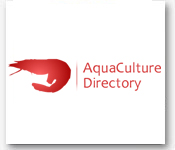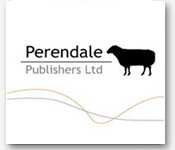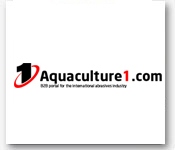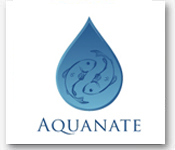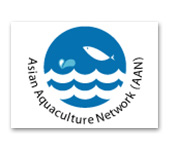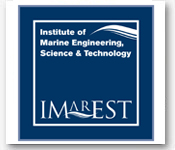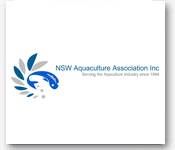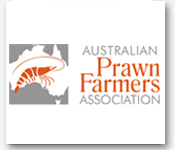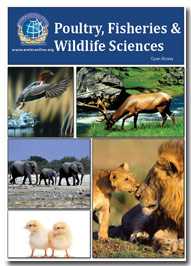Theme: Innovations in Controlled Environment Aquaculture
Aquaculture-2016
ConferenceSeries Ltd feels proud to host around 1000+ global events to address the current issues and discoveries in the field of Life sciences, Applied Science & Engineering, Omics and Management, Clinical, Medical and Pharmaceutical sciences.
To the contributors across the globe we invite you to Conference Series premier 3rd International Conference on Aquaculture & Fisheries to be held during September 29- October 1, 2016 at London, UK. Aquaculture congress is the premier event that brings together a unique and International mix of experts, like aquaculture engineers, researchers and decision makers both from academia and industry across the globe to exchange their knowledge, experience and research innovations to its world aquaculture conference. Aquaculture is a Major Field in modern food supply according to the FAO, aquaculture "is understood to mean the farming of aquatic organisms including fish, molluscs, crustaceans and aquatic plants. Farming implies some form of intervention in the rearing process to enhance production, such as regular stocking, feeding, protection from predators, etc. Aquaculture conference will cover the new research Techniques and concentrates on aquaculture exhibition of new feeds, fish welfare, antibiotics, instruments introduced by the aquaculture fisheries Laboratories. Also covers the increase in need for demanding sea food. Aquaculture brings basic and advanced research of Developmental, Toxicological and Transgenic aspects.
Â
Track 1: Aquatic Farming Methods: Hatchery, Nutrition and Feed Management
Fish farming or pisciculture is the major type of aquaculture, while other techniques may fall under mariculture. Events on Aquaculture and fishery management entails raising fish profitably in tanks or enclosures, regularly for food. A competence that fish wild for recreational fishing or to increase a species' natural numbers is commonly referred to as a fish hatchery. The fish species used in fish farming are carp, salmon, tilapia, catfish across the world. Species that are estimated 230 species of fin fish, molluscs, crustaceans, aquatic plants, turtles, frogs, etc. are cultured. Culture systems like water-based systems, such as cages and pens, bottom, pole, rack, raft long-line systems for inshore and off-shore; land systems such as rain-fed ponds; irrigated or flow-through systems, tanks and raceways; land and water based systems, sea ranching; recycling such as high control enclosed systems, more open pond-based recirculation systems; integrated farming systems, such as integrated aquaculture, livestock-aquaculture seminars
Related Conferences:
2nd Global Summit on Aquaculture & Fisheries July 11-13, 2016 Kuala Lumpur, Malaysia, 3rd International Conference on Aquaculture& Fisheries Industry August 8-10, 2016 Las Vegas, USA, 4th International Conference on Aquaculture& Fisheries, September 29-October 01, 2016 London, United Kingdom, World Aquaculture Conference 2016 February 22 -26, 2016 Las Vegas, Nevada , AQUACULTURE EUROPE 20-23 September, 2016 Edinburgh, Scotland, 2nd International Conference of Fish& Shellfish Immunology June 26-30, 2016 Maine, USA, International Conference on Marine Science& Aquaculture March 23–24 Sabah, Malaysia, 5th Global Feed & Food Congress April 18-20, 2016 Antalya, Turkey.
Related Societies:
Aquaculture society, USA; American Fisheries Society, USA;Asian Fisheries Society, China; American Aquaculture Development Program, India; Tilapia Association, USA; Aqua Biotechnology, UK;Aquaculture Association of Canada, Canada; Aquaculture Engineering Society, USA; Bureau of Fisheries and Aquatic Resources, UK; California Aquaculture Association, USA; Canadian Aquaculture Industry Alliance, Canada; Canadian Association of Fish Farmers, Canada; China Society of Fisheries, China; European Aquaculture Society, Spain; European Association of Fish Pathologists, Switzerland; Food and Agriculture Organization – Fisheries, Italy; Federation of European Aquaculture Producers, Germany; Global Aquaculture Alliance, USA
Track 2: Fish Habitat, Ecology & Conservation
Fisheries and aquaculture meetings spotlight on Fish Habitat and ecological studies of physiological tolerances, predator avoidance and feeding, reproduction and life histories. Its unifying role is built on two postulations, introduced from that struggle is present interspecifically and intraspecifically under at least some situations, and that habitat features have some perseverance and predictability in space and time. Consistent with its central theoretical place in ecology, habitat science has added importantly to scientific opinion on pollution, coastal zone management and many other areas of environmental quality, even though it has been largely divorced from developments in fish population dynamics done for fisheries management. Commitments by most of agencies to apply an integrated, ecosystem to management of human activities in marine systems, poses new challenges to marine science advisors to organizations. Integrated management and ecosystem approaches both intrinsically require spatial thinking and spatial tools, building habitat science a particularly appropriate advisory framework, particularly because of this role of habitat in ecology. The vital mechanisms of biological dynamics, productivity, concentration, present much weaker opportunities for competition and less persistence and predictability, the foundations of theory and concepts behind current habitat science. This aquaculture conference highlights thinking about 'habitat' that will be needed, if habitat science is to meet the advisory needs of the new approaches to manage
Related Conferences:
2nd Global Summit on Aquaculture & Fisheries July 11-13, 2016 Kuala Lumpur, Malaysia, 3rd International Conference on Aquaculture& Fisheries Industry August 8-10, 2016 Las Vegas, USA, 4th International Conference on Aquaculture& Fisheries, September 29-October 01, 2016 London, United Kingdom, World Aquaculture Conference 2016 February 22 -26, 2016 Las Vegas, Nevada , AQUACULTURE EUROPE 20-23 September, 2016 Edinburgh, Scotland, 5th Global Feed & Food Congress April 18-20, 2016 Antalya, Turkey.International Conference on Marine Science& Aquaculture March 23–24 Sabah, Malaysia, 2nd International Conference of Fish& Shellfish Immunology June 26-30, 2016 Maine, USA,
Related Societies:
Federation of European Aquaculture Producers, Germany; American Fisheries Society, USA;Asian Fisheries Society, China; American Aquaculture Development Program, India; Tilapia Association, USA; Canadian Aquaculture Industry Alliance, Canada; Aqua Biotechnology, UK;Aquaculture Association of Canada, Canada; Aquaculture Engineering Society, USA; Bureau of Fisheries and Aquatic Resources, UK; California Aquaculture Association, USA; Canadian Association of Fish Farmers, Canada; China Society of Fisheries, China; European Aquaculture Society, Spain; European Association of Fish Pathologists, Switzerland; Food and Agriculture Organization – Fisheries, Italy; Global Aquaculture Alliance, USAAquaculture society, USA;
Track 3: Aquaculture Diseases and Health Management
Transgenic fish conferences and aquaculture meetings mainly spotlight on disease problems represent the largest single cause of monetary losses in aquaculture. In 1988, channel catfish producers lost over 100 million fish worth nearly $11 million. Estimates for 1989 forecast even higher losses. The trout industry reported 1988 losses of 30 million fish costs over $2.7 million. No data are available on losses sustained by producers of shellfish. Bacterial infections constitute the most significant source of disease problems in all the diverse types of production. Gram-negative bacteria epizootics in cultured species. Fungal diseases constitute the second most essential source of losses, above all in the culture of crustaceans and salmon. Protozoan parasites are accountable for the loss of huge numbers of fry and fingerling fin fishes and are a cause of epizootics among young shellfish.
Related Conferences:
2nd Global Summit on Aquaculture & Fisheries July 11-13, 2016 Kuala Lumpur, Malaysia, 3rd International Conference on Aquaculture& Fisheries Industry August 8-10, 2016 Las Vegas, USA, 4th International Conference on Aquaculture& Fisheries, September 29-October 01, 2016 London, United Kingdom, AQUACULTURE EUROPE 20-23 September, 2016 Edinburgh, Scotland, 2nd International Conference of Fish& Shellfish Immunology June 26-30, 2016 Maine, USA, International Conference on Marine Science& Aquaculture March 23–24 Sabah, Malaysia, 5th Global Feed & Food Congress April 18-20, 2016 Antalya, Turkey.World Aquaculture Conference 2016 February 22 -26, 2016 Las Vegas, Nevada ,
Related Societies:
Food and Agriculture Organization – Fisheries, Italy; Aquaculture society, USA; American Fisheries Society, USA;Asian Fisheries Society, China; Tilapia Association, USA; Aqua Biotechnology, UK;Aquaculture Association of Canada, Canada; Aquaculture Engineering Society, USA; Bureau of Fisheries and Aquatic Resources, UK; California Aquaculture Association, USA; Canadian Aquaculture Industry Alliance, Canada; Canadian Association of Fish Farmers, Canada; China Society of Fisheries, China; European Aquaculture Society, Spain; Federation of European Aquaculture Producers, Germany; Global Aquaculture Alliance, USAEuropean Association of Fish Pathologists, Switzerland;American Aquaculture Development Program, India;
Track 4: Aquaponics- Planning, Construction and Maintenance
Meetings on aquaculture also focus on aspects like Aquaponics- Planning, Construction and maintenance. Specified the problems performing experiments on humans, medicinal research has focused on using model organisms to biologic processes conserved between humans and its lower grades. The most ordinary model organisms are small mammals, usually mice and rats. Although these models have significant benefits, they are also expensive to maintain, difficult to manipulate imperfect for large-scale genetic studies. The zebrafish model complements these deficiencies in experimental models. The cost is low, minute size, and external development of zebrafish makes it an outstanding model for vertebrate development biology. Fish conference highlights the techniques for large-scale genome mutagenesis and gene mapping, transgenesis, protein biology, cell transplantation and chimeric analysis, and chemical screens have immeasurably increased the control of this model organism. It is now achievable to rapidly determine the developmental property of a gene of interest, which identifies genetic and chemical modifications of the processes involved. Inventions made in zebrafish usually validated in mammals. With novel technologies regularly developed, the zebrafish is to significantly improve the vertebrate development under normal and pathologic circumstances
Related Conferences:
2nd Global Summit on Aquaculture & Fisheries July 11-13, 2016 Kuala Lumpur, Malaysia, 3rd International Conference on Aquaculture& Fisheries Industry August 8-10, 2016 Las Vegas, USA, 4th International Conference on Aquaculture& Fisheries, September 29-October 01, 2016 London, United Kingdom, World Aquaculture Conference 2016 February 22 -26, 2016 Las Vegas, Nevada , 5th Global Feed & Food Congress April 18-20, 2016 Antalya, Turkey. AQUACULTURE EUROPE 20-23 September, 2016 Edinburgh, Scotland, 2nd International Conference of Fish& Shellfish Immunology June 26-30, 2016 Maine, USA, International Conference on Marine Science& Aquaculture March 23–24 Sabah, Malaysia,
Related Societies:
Global Aquaculture Alliance, USA;Aquaculture society, USA; American Fisheries Society, USA;Asian Fisheries Society, China; Tilapia Association, USA; Aqua Biotechnology, UK;Aquaculture Association of Canada, Canada; China Society of Fisheries, China; Aquaculture Engineering Society, USA; Bureau of Fisheries and Aquatic Resources, UK; California Aquaculture Association, USA; Canadian Aquaculture Industry Alliance, Canada; Canadian Association of Fish Farmers, Canada; American Aquaculture Development Program, India; European Aquaculture Society, Spain; European Association of Fish Pathologists, Switzerland; Food and Agriculture Organization – Fisheries, Italy; Federation of European Aquaculture Producers, Germany;
Track 5: Aquaculture Law and Policy
In fish species seminars and ethical issues meetings about the majority countries and specific aquaculture policy article does not exist and aquaculture is usually included in the Fishery Sector Development Policy, document. It is also mentioned in further strategic policy documents; those for Industry and Environment are the two major policy documents. In the absence of the policy, aquaculture development is primarily based on development strategy elaborated by the authorities in charge for the administering the division but without formal approval. Few mechanisms with the definition of policy mostly comprise unofficial consultations, having three exemptions. The foremost is in Spain where a formal Consultative Committee on Fisheries and Aquaculture has been established in Cataluña including the main representatives from the aquaculture sector meetings. The subsequent exception is in Greece, where there is an Agricultural Policy Council within the Agriculture; this is a consultative body in which representatives from the Ministry itself
Related Conferences:
AQUACULTURE EUROPE 20-23 September, 2016 Edinburgh, Scotland,2nd Global Summit on Aquaculture & Fisheries July 11-13, 2016 Kuala Lumpur, Malaysia, 3rd International Conference on Aquaculture& Fisheries Industry August 8-10, 2016 Las Vegas, USA, 4th International Conference on Aquaculture& Fisheries, September 29-October 01, 2016 London, United Kingdom, , 2nd International Conference of Fish& Shellfish Immunology June 26-30, 2016 Maine, USA, International Conference on Marine Science& Aquaculture March 23–24 Sabah, Malaysia, 5th Global Feed & Food Congress April 18-20, 2016 Antalya, Turkey,World Aquaculture Conference 2016 February 22 -26, 2016 Las Vegas, Nevada
Related Societies:
European Aquaculture Society, Spain; Global Aquaculture Alliance, USAAquaculture society, USA; American Fisheries Society, USA;Asian Fisheries Society, China; American Aquaculture Development Program, India; China Society of Fisheries, China; Tilapia Association, USA; Aqua Biotechnology, UK;Aquaculture Association of Canada, Canada; Aquaculture Engineering Society, USA; Bureau of Fisheries and Aquatic Resources, UK; California Aquaculture Association, USA; Canadian Aquaculture Industry Alliance, Canada;Food and Agriculture Organization – Fisheries, Italy; Canadian Association of Fish Farmers, Canada; European Association of Fish Pathologists, Switzerland; Federation of European Aquaculture Producers, Germany;
Track 6: Diversification in aquaculture
Diversified events on aquaculture are presented as an alternative for achieving that sustainable growth. Diversification directs to a feasible economy, for not only would it support on only a small number of sectors (or in the case of aquaculture, a small products or production systems), but would lead to the creation of jobs in diverse sectors and the demand for unique professions and a ecological system, thereby preventing the excessive use of natural reserves. Due to the abovementioned, diversity has an useful part to play in achieving aquaculture based on sustainable development. Diversification in aquaculture production should be developed through cultivating hydro-biological resources which, in technical terms, are easy to execute and handle, creating new investment substitutes in both the industrial and traditional fishing sector conferences
Related Conferences:
2nd Global Summit on Aquaculture & Fisheries July 11-13, 2016 Kuala Lumpur, Malaysia, 3rd International Conference on Aquaculture& Fisheries Industry August 8-10, 2016 Las Vegas, USA, 4th International Conference on Aquaculture& Fisheries, September 29-October 01, 2016 London, United Kingdom, 5th Global Feed & Food Congress April 18-20, 2016 Antalya, Turkey.World Aquaculture Conference 2016 February 22 -26, 2016 Las Vegas, Nevada , AQUACULTURE EUROPE 20-23 September, 2016 Edinburgh, Scotland, International Conference on Marine Science& Aquaculture March 23–24 Sabah, Malaysia, 2nd International Conference of Fish& Shellfish Immunology June 26-30, 2016 Maine, USA,
Related Societies:
Aquaculture society, USA; American Fisheries Society, USA;Asian Fisheries Society, China; American Aquaculture Development Program, India; Tilapia Association, USA; Aqua Biotechnology, UK;Aquaculture Association of Canada, Canada; Aquaculture Engineering Society, USA; Bureau of Fisheries and Aquatic Resources, UK; California Aquaculture Association, USA; Canadian Aquaculture Industry Alliance, Canada; Canadian Association of Fish Farmers, Canada; China Society of Fisheries, China; European Aquaculture Society, Spain; European Association of Fish Pathologists, Switzerland; Food and Agriculture Organization – Fisheries, Italy; Federation of European Aquaculture Producers, Germany; Global Aquaculture Alliance, USA
Track 7: Aquatic Immunology
Aquatic immunology eventscompacts with disease problems represent the largest single cause of monetary losses in aquaculture. In 1988, catfish producers lost over 100 million fish worth nearly $11 million. Estimates for 1989 forecast even major losses. The trout industry reported 1988 losses of over 20 million fish worth over $2.5 million. No data are avail on losses sustained by producers of shellfish. Bacterial infections constitute the most significant source of disease problems in all the diverse types of production. Gram-negative bacteria cause epizootics in nearly all cultured species. Fungal diseases constitute the second most essential source of losses, above all in the culture of crustaceans and salmon. Events of protozoan parasites are accountable for the loss of huge numbers of fry and fingerling fin fishes and are a cause of epizootics from all young shellfish. The number of therapeutants approved by the Food and Drug Administration is limited. Invention to support the registration of promising therapeutic agents is urgently needed
Related Conferences:
2nd Global Summit on Aquaculture & Fisheries July 11-13, 2016 Kuala Lumpur, Malaysia, 3rd International Conference on Aquaculture& Fisheries Industry August 8-10, 2016 Las Vegas, USA, 4th International Conference on Aquaculture& Fisheries, September 29-October 01, 2016 London, United Kingdom, World Aquaculture Conference 2016 February 22 -26, 2016 Las Vegas, Nevada , AQUACULTURE EUROPE 20-23 September, 2016 Edinburgh, Scotland, 2nd International Conference of Fish& Shellfish Immunology June 26-30, 2016 Maine, USA, International Conference on Marine Science& Aquaculture March 23–24 Sabah, Malaysia, 5th Global Feed & Food Congress April 18-20, 2016 Antalya, Turkey.
Related Societies:
European Association of Fish Pathologists, Switzerland; Aquaculture society, USA; American Fisheries Society, USA;American Aquaculture Development Program, India; Tilapia Association, USA; Federation of European Aquaculture Producers, Germany; Aqua Biotechnology, UK;Aquaculture Association of Canada, Canada; Aquaculture Engineering Society, USA; Bureau of Fisheries and Aquatic Resources, UK; California Aquaculture Association, USA; Canadian Aquaculture Industry Alliance, Canada; Canadian Association of Fish Farmers, Canada; China Society of Fisheries, China; European Aquaculture Society, Spain; Food and Agriculture Organization – Fisheries, Italy; Global Aquaculture Alliance, USAAsian Fisheries Society, China;
Track 8: Aquatic Physiology
Aquatic Physiology meetings is detailed assessment of the physiology and activities of aquatic animals, with an emphasis on fish and crustaceans. Growth, respiration, osmoregulation excretion, reproduction, endocrinology and sensory physiology are discussed in relation to the possessions of natural and artificial environmental changes on physiological methods. The part of study will emphasize the physiological mechanisms which are conserved across taxa and those that are exclusive to a specific aquatic animal group, with some case studies on how particular groups of animals handle physiologically high environments and with contrasting environments at different parts of their life cycle (e.g., anadromy in salmon, catadromy in eels). Inventions will also be used to focus on the constraints solutions to particular physiological problems may effects on other aspects of the life of the animal in most of the fish DNA vaccines meetings, fish consumers conferences& GM fish conferences
Related Conferences:
2nd Global Summit on Aquaculture & Fisheries July 11-13, 2016 Kuala Lumpur, Malaysia, 3rd International Conference on Aquaculture& Fisheries Industry August 8-10, 2016 Las Vegas, USA, 4th International Conference on Aquaculture& Fisheries, September 29-October 01, 2016 London, United Kingdom, World Aquaculture Conference 2016 February 22 -26, 2016 Las Vegas, Nevada , AQUACULTURE EUROPE 20-23 September, 2016 Edinburgh, Scotland, 2nd International Conference of Fish& Shellfish Immunology June 26-30, 2016 Maine, USA, 5th Global Feed & Food Congress April 18-20, 2016 Antalya, Turkey,International Conference on Marine Science& Aquaculture March 23–24 Sabah, Malaysia,
Related Societies:
Global Aquaculture Alliance, USAAquaculture society, USA; American Fisheries Society, USA;Asian Fisheries Society, China; Tilapia Association, USA; Aqua Biotechnology, UK;Aquaculture Association of Canada, Canada; Aquaculture Engineering Society, USA; Bureau of Fisheries and Aquatic Resources, UK; Federation of European Aquaculture Producers, Germany; California Aquaculture Association, USA; Canadian Aquaculture Industry Alliance, Canada; Canadian Association of Fish Farmers, Canada; China Society of Fisheries, China; European Aquaculture Society, Spain; European Association of Fish Pathologists, Switzerland; Food and Agriculture Organization – Fisheries, Italy; American Aquaculture Development Program, India;
Track 9: Aquatic Toxicology
Aquatic toxicology seminars focus on the defects of manufactured chemicals and additional anthropogenic and natural materials and activities on aquatic organisms at different levels of organization, from subcellular through individual organisms to groups and ecosystems. Aquatic toxicology is a multidisciplinary field which adds toxicology, aquatic ecology eventsand aquatic chemical science. This field of study includes freshwater, marine water and sediment environments. Common tests include standardized small and chronic toxicity tests lasting 24–96 hours (acute test) to 7 days or more (chronic tests). These tests measure endpoints such as growth, reproduction, that are measured at each concentration in a gradient, along with a control test. Normally selected organisms with ecologically relevant sensitivity to toxicants used to establish literature background. These organisms can be simply acquired or cultured in lab and are simple to handle
Related Conferences:
2nd Global Summit on Aquaculture & Fisheries July 11-13, 2016 Kuala Lumpur, Malaysia, 3rd International Conference on Aquaculture& Fisheries Industry August 8-10, 2016 Las Vegas, USA, 4th International Conference on Aquaculture& Fisheries, September 29-October 01, 2016 London, United Kingdom, AQUACULTURE EUROPE 20-23 September, 2016 Edinburgh, Scotland, International Conference on Marine Science& Aquaculture March 23–24 Sabah, Malaysia, 5th Global Feed & Food Congress April 18-20, 2016 Antalya, Turkey,World Aquaculture Conference 2016 February 22 -26, 2016 Las Vegas, Nevada ,2nd International Conference of Fish& Shellfish Immunology June 26-30, 2016 Maine, USA,
Related Societies:
Food and Agriculture Organization – Fisheries, Italy;Aquaculture society, USA; American Fisheries Society, USA;Asian Fisheries Society, China; American Aquaculture Development Program, India; Canadian Aquaculture Industry Alliance, Canada; Tilapia Association, USA; Aqua Biotechnology, UK;Aquaculture Association of Canada, Canada; Aquaculture Engineering Society, USA; Bureau of Fisheries and Aquatic Resources, UK; California Aquaculture Association, USA; Canadian Association of Fish Farmers, Canada; China Society of Fisheries, China; European Aquaculture Society, Spain; European Association of Fish Pathologists, Switzerland; Global Aquaculture Alliance, USAFederation of European Aquaculture Producers, Germany;
Track 10: Aquaculture Environment Interactions
Adaptions of aquatic species symposiums majorly organized to discuss on environmental impacts, other aquaculture events have been associated mainly with high-input and high-output intensive systems (e.g. culture of salmonids in raceways and cages) the effects of which included discharge of suspended solids, and nutrient and organic enrichment of recipient waters resulting in build-up of anoxic sediments, changes in benthic communities (alteration of seabed fauna and flora communities) and the eutrophication of lakes.
Related Conferences:
2nd Global Summit on Aquaculture & Fisheries July 11-13, 2016 Kuala Lumpur, Malaysia, 3rd International Conference on Aquaculture& Fisheries Industry August 8-10, 2016 Las Vegas, USA, 4th International Conference on Aquaculture& Fisheries, September 29-October 01, 2016 London, United Kingdom, AQUACULTURE EUROPE 20-23 September, 2016 Edinburgh, Scotland, 5th Global Feed & Food Congress April 18-20, 2016 Antalya, Turkey.2nd International Conference of Fish& Shellfish Immunology June 26-30, 2016 Maine, USA, International Conference on Marine Science& Aquaculture March 23–24 Sabah, Malaysia, World Aquaculture Conference 2016 February 22 -26, 2016 Las Vegas, Nevada.
Related Societies:
European Association of Fish Pathologists, Switzerland; Aquaculture society, USA; American Fisheries Society, USA;Asian Fisheries Society, China;European Aquaculture Society, Spain; American Aquaculture Development Program, India; Tilapia Association, USA; Aqua Biotechnology, UK;Aquaculture Association of Canada, Canada; Aquaculture Engineering Society, USA; Global Aquaculture Alliance, USACalifornia Aquaculture Association, USA; Canadian Association of Fish Farmers, Canada; China Society of Fisheries, China;Bureau of Fisheries and Aquatic Resources, UK; Food and Agriculture Organization – Fisheries, Italy; Federation of European Aquaculture Producers, Germany; Canadian Aquaculture Industry Alliance, Canada;
3rd International Conference on Aquaculture & Fisheries to be held during September 29- October 01, 2016 London, United Kingdom focussed in the theme "Innovations in Controlled Environment Aquaculture"
Aquaculture, also known as aqua farming, is the farming of aquatic organisms such as fish, crustaceans, molluscs and aquatic plants. It is a subject for the professionals who looks beyond the efforts. Aquaculture 2016 gathers all the assertive persons under one roof of current advancements.
The 3rd International Conference Aquaculture and Fisheries to be held at London, United Kingdom during July 20-22, 2016 hosted by OMICS International Conferences through the theme "Innovations in Controlled Environment Aquaculture ", the conference will explore the advances in field of Aquaculture technology and Fisheries science etc.. This conference could be an exceptional event that brings along a novel and International mixture of giant and medium aquaculture practioners , leading universities and industries establishments creating the conference an ideal platform to share expertise, foster collaborations across trade and world, and assess rising technologies across the world. OMICS International Publishes 700+ Open access journals which contains over 50000 eminent personalities, reputed scientists as editorial board members and Organizes 600+ Conferences every year across USA, Europe & Asia with support from 1000 more scientific societies.
Importance & Scope:
Aquaculture is a Major Field in modern food supply according to the FAO, aquaculture "is understood to mean the farming of aquatic organisms including fish, molluscs, crustaceans and aquatic plants. Farming implies some form of intervention in the rearing process to enhance production, such as regular stocking, feeding, protection from predators, etc.
Aquaculture 2016 conference will cover the new research Techniques and concentrates on Exhibition of new feeds, antibiotics, instruments introduced by the Aquaculture Laboratories. Also covers the increase in need for demanding sea food. Aquaculture brings basic and advanced research of Controlled Environment Aquaculture.
Why London?
Aquaculture is the fastest growing primary industry in United Kingdom; in fact it is the fastest growing food production sector in the world. With limited room for expansion in wild catch fisheries together with an ever-increasing world population, there is a heavy reliance on aquaculture as the means for fish production to meet world demand. So the Aquaculture-2016 in going to be held in United Kingdom
United Kingdom is more than 300 years old and comprises four constituent nations: England, Scotland, Wales, and Northern Ireland. The UK has been a centre of learning for the past 1,000 years and possesses many ancient and distinguished universities. Foreign students make up a significant proportion of the student body at UK universities. London is the capital of UK, the most populous region and where royal family lives. It has the largest concentration of higher education in Europe with 412 thousand students at 43 universities. In regards to global aquaculture markets by latest Aqua sense Remote Monitoring technology. London is a center for higher learning, major universities & organizations providing valuable research contributing for development of world aquaculture to meet the demand for fish by 2050.
Conference Highlights:
· Aquatic Farming Methods: Hatchery, Nutrition and Feed Management
· Fish Habitat, Ecology and Conservation
· Comparative Biology of Aquatic Species
· Aquaculture Related Diseases and Health Management
· Aquaponics- Planning, Construction and Maintainance
· RAS- Recirculating Aquaculture Systems
· Aquatic Biology- Immunology, Physiology, Toxicology
· Diversification in Aquaculture
· Aquaculture Environment Interactions – Measuring, Modelling and Mitigation
· Aquaculture Law and Policy
Why to attend???
Aquaculture 2016 could be an exceptional event which will lay a platform for the interaction between experts around the world and aims to accelerate scientific discoveries and major milestones in the field of Aquaculture technology and Fisheries science, creating the conference an ideal platform to share expertise, foster collaborations across trade and world, and assess rising technologies across the world. World-renowned speakers, the most recent techniques and the updates in Aquaculture fields are exceptional features of this conference.
A Unique Opportunity for Advertisers and Sponsors at this International event:
http://aquaculture-fisheries.conferenceseries.com/Sponsorship.pdf
Major Aquaculture Associations in UK
· British Columbia Shellfish Growers Association
· European Aquaculture Society
· FAO Fisheries & Aquaculture
· British Trout Association
· British Marine Finfish Association
· Centre for Environment, Fisheries and Aquaculture Science (Cefas)
· The Scottish Association for Marine Science
· The National Aquaculture Association (NAA)
· Department for Environment, Food and Rural Affairs
Major Aquaculture Associations in London
· Ohio Aquaculture Association
· Wisconsin Aquaculture Association
· Royal Society of London
Target Audience:
Practicing Aquaculture farmers, Aquaculture professionals in training and other interested in the latest advances and techniques in the field. Another segment of target audience is fishery science researchers, sea food organizations, Educational institutes. Industries, etc.
Total Aquaculture practitioners
· London- 15679
· United Kingdom- 88562
· Europe-8,22,764
· World Wide- 969580
Knowledge sharing:
· Community Practice (80%)
· Academic Practice & Medical School Administration (15%)
· Industry (3%)
· Government, Public Health & Regulatory Positions (1%)
Aquaculture Associated Universities In and Nearby London
· University of Greenwich, London
· Kings College London
· University College London
Top Universities in United Kingdom
· Portsmouth University
· Queen Mary University of London & University Marine Biological Station
· Southampton University
· Stirling University
· Swansea University
· University of Hull
· University of Liverpool
· University of St Andrews
· University of Wales
· Warwick University
· York University
· Heriot Watt University
· Napier University
· Newcastle University
· Plymouth University
Companies Associated with Aquaculture
· Aquaculture Equipment Limited
· Llyn Aquaculture Ltd
· Longline Environment Ltd
· Scottish Sea Farms
· Islay Crab Exports
· Farne Salmon & Trout Ltd
· Freshwater Solutions
· Drydenaqua
· GroWell Hydroponics & Plant Lighting Ltd
· Acquaeco
Market Analysis of Aquaculture
Fish has been playing a vital role in providing much needed animal protein to vast global population contributing some 20% of animal protein intake for over 3 billion people. In fact, dependence on fish as a source of cheap animal protein is much higher in developing world. With increasing population estimated to cross 9 billion by 2050, various agencies have estimated demand for fish leading to mind boggling figures. With global catch of wild fish supply stagnant as most of the stocks have either reached their maximum sustainable yields or over-exploited, the bonus of meeting the demand is on or through aquaculture. One study indicates that to meet the demand for fish BY 2050, aquaculture production need to increase by 133% as compared to 2010 levels of production.
With pressure on land and water increasing and in short supply, it would not be possible for extensive or semi-intensive aquaculture being practised presently in most of the developing countries. As green revolution technologies and hybrid/transgenic crops have contributed to increased cereal and commercial crop production, aquaculture research needs to come up with technological advances that leads not only to increased productions, but should also ensure that intensification of aquaculture will not lead to additional impact on the already stressed environment.
Impact of the environment on aquaculture
· Harmful Algal Blooms: detection, forecasting, and influences
· Capacity modelling
· Jellyfish Monitoring
· Impacts of invasive species
Impact of aquaculture on the environment
· Predictive modelling of benthic effects of aquaculture: AutoDEPOMOD/MERAMOD
· The fate of medicines in the environment
· Environmental impact assessment methodology
· Benthic recovery and sediment sulphides
· Hydrodynamical modelling: FV-COM: from bay to shelf
· Modelling lice transmission and connectivity
· Regulation of aquaculture
Diversification of aquaculture practices
· Research and development of Integrated Multi-Trophic Aquaculture (IMTA)
· Seaweed culture
· Invertebrate culture
Socio-economic systems related to aquaculture
· Integrated socio-ecological impacts and policy
· Stakeholder and policy mapping
References:
1. http://www.fao.org/fishery/topic/13827/en
2. http://www.aquaculture.ugent.be/Services/links/inst.htm#list
3. http://www.sams.ac.uk/aquaculture/centre-for-aquaculture#sthash.CIyp3pqz.dpuf
Conference Highlights
- Aquatic Farming Methods: Hatchery, Nutrition and Feed Management
- Fish Habitat, Ecology and Conservation
- Comparative Biology of Aquatic Species
- Aquaculture Related Diseases and Health Management
- Aquaponics- Planning, Construction and Maintainance
- RAS- Recirculating Aquaculture Systems
- Aquatic Biology- Immunology, Physiology, Toxicology
- Diversification in Aquaculture
- Aquaculture Environment Interactions – Measuring, Modelling and Mitigation
- Aquaculture Law and Policy
To share your views and research, please click here to register for the Conference.
To Collaborate Scientific Professionals around the World
| Conference Date | September 29-30 2016 | ||
| Sponsors & Exhibitors |
|
||
| Speaker Opportunity Closed | Day 1 | Day 2 | Day 3 |
| Poster Opportunity Closed | Click Here to View | ||
Useful Links
Special Issues
All accepted abstracts will be published in respective Our International Journals.
- Journal of Aquaculture Research & Development
- Fisheries and Aquaculture Journal
- Journal of Fisheries & Livestock Production
Abstracts will be provided with Digital Object Identifier by








